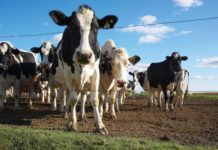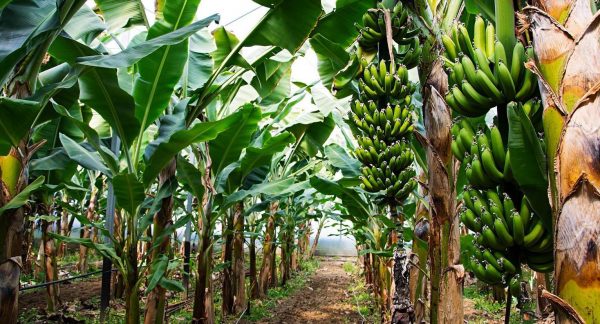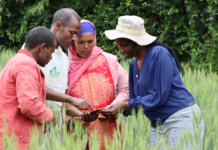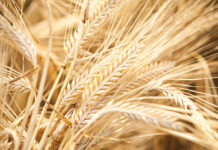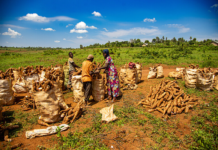Harald Kramer, North Rhine-Westphalia Chamber of Agriculture (Crop Protection Service)
(DLG). Almost no other area in agriculture is discussed as emotionally as chemical crop protection. At the same time, many practitioners are currently asking themselves whether the financial outlay for a new sprayer is worth it at all. But it will very quickly become clear that with a rising world population and a continuous decrease in the amount of agricultural land, the only logical conclusion must actually be to cultivate the remaining land even more intensively in order to ensure food security. But where are the main parameters in farming systems for ensuring yields without neglecting aspects such as the environment, sustainability, etc.?
Here, politics is imposing major challenges, such as the Green Deal, Farm to Fork, etc., on farmers in practice. This means that reductions must be made in the use of crop protection products, while maintaining the same biological effect and good yields. For despite all the reduction philosophy, the crops must be kept appropriately healthy in order to deliver corresponding yields. Against this background, areas such as hoeing technology, boom spraying, artificial intelligence, etc. are gaining enormous importance in meeting these goals. In other words, farming practice is currently on the threshold of making the already very precise crop protection even more precise.
Here in particular, the agricultural machinery industry offers many new or improved ideas for raising the already high standard of application accuracy even higher. The combination of mechanical weed control and boom spraying in row crops offers immense potential in terms of saving pesticides, new opportunities in resistance management, etc. Improved forecasting models, closely coupled with application technology utilising improved sensors, application maps, artificial intelligence, programs and nozzle technologies, can also position agriculture even better and more sustainably for the future. Furthermore, the improved or expanded capacity utilisation of the field sprayer with electronics and/or application of liquid fertiliser offers practitioners many new options that must be taken into account when making new purchases.
Agritechnica 2023 is the perfect place to gain an overview. Finally back as a physical event, the leading trade fair for agricultural technology offers many real solutions. For farmers don’t just want to hear promises, they want to see and touch machines in order to face the entire range of issues in an operationally optimised manner.
Optimisation of performance
Many equipment manufacturers are expanding their portfolio with front tank systems, drum volumes and self-propelled units. Actually, no wishes are left unfulfilled here. But besides the actual size of the sprayer, the filling logistics of the sprayer are also of great importance. This starts with the digital label of the crop protection products, continues with closed transfer systems (CTS) and quickly ends with the optimal nozzle technology. All areas have one thing in common here: optimal equipment for the respective operational structure. After all, simply driving faster isn’t the solution in most cases. The factors for successful crop protection are very complex and even small changes have a major impact. One example here is knowledge about weather conditions during application of the agents. On the one hand, in practice farmers are happy to have tractor cabins with air conditioning up to the maximum protection of a Cat. 4 cabin. But here in particular, a sprayer driver no longer notices the conditions, like the wind picking up. For some time now, the industry has been providing solutions for this, which display the spraying weather in the cabin and, if necessary, also document it. This is because excessively strong winds lead to increased drift and consequently to a poorer effectiveness, as it’s not known where the crop protection product will end up, while at the same time polluting the environment. That’s why these systems also help to verify that all requirements have been met and that no damage has been caused to the natural environment.
Reduction in use of crop protection products
Especially the political demands for the reduction of pesticides has resulted in a great deal of change in the research priorities of the industry. Because without this topic, there would certainly not be as many people concerned with boom application in combination with different hoeing systems. With the hoe in particular, a tried and tested system has been raised to a higher level with new technology. In addition to the different hoeing units, camera control and shifting frames enable many hoes to work even more precisely. Systems of this kind can provide considerable potential for reducing the use of pesticides in classic root crops such as sugar beet, maize and potatoes. Boom application has also become more user-friendly for the operator thanks to new nozzles and field spraying systems. Here, the practitioner can choose from the cabin whether he/she wants to carry out an area treatment or boom spraying. However, the euphoria must be curbed a little. Besides the problem that the hoe likes it dusty-dry and the sprayer prefers it damp, heterogeneity in the field is also sometimes a problem. This is because sowing technology must also be integrated into a system like this. It goes without saying that the entire farming operation must be equipped with Real Time Kinematic (RTK) systems. Even if boom application is carried out with a field sprayer, there are currently almost unsolvable problems in the headland area and in hilly terrain, meaning that area treatment should be carried out here. Even hoeing in line is not as easy as it sounds. Therefore, the practitioner is dependent on all modules and technical solutions to extract the maximum savings under the most diverse conditions.
If this is taken a step further to spot application, then the high-tech sector has finally been reached. With such maintenance systems, it’s really only possible to treat those areas that absolutely require crop protection products. Nevertheless, it will certainly take a little more time before series production is reached here. Even though systems such as special spot sprayers with small working widths and artificial intelligence are currently in use, which already do a very good job. The so-called smart sprayers also show what is already possible in agricultural machinery today.
Alternatives to the chemical product or the hoe are also slowly gaining attention in agricultural machinery. This year, for example, boom treatment systems that use laser technology to tackle weeds will also be on exhibit. The advantage here is that it’s possible to get even closer to the crop, as the work is carried out contact-free. There is certainly a lot of potential in such systems for the future of weed control.
Intelligent crop protection technology
One trend is unmistakable across all spraying systems: The utilisation of the sprayer can and must still be increased. In the process, electronic aids are certain to be a decisive factor. This already begins with corresponding diagnosis and forecasting models. For first of all, it is of course necessary to know the situation in the field. In the recent past the specification was the desire for real-time solutions, i.e. to carry out everything during one crossing. However, here as well there are approaches for creating application maps beforehand with multicopters or drones. The major advantage is due to the fact that with systems of this kind, the exact treatment area can be calculated. Then only as much spray liquid is subsequently made available as is absolutely necessary, therefore eliminating any residual quantities that would often cause disposal difficulties for practitioners. In addition, more complex and more exact sensors can naturally also be used for detection, as here only one sensor is required. If the entire working area is to be covered on the sprayer with the rod assembly, a much greater number of sensors are required, which would of course dramatically increase the price of the machine. As a result, various technologies can optimally supplement each other to achieve even more exact crop protection.
However, for all the electronic support and the large number of individual modules, there is an increasing demand from practice for user friendliness and overall solutions. For this reason, it is also hardly surprising that manufacturers required comprehensive, open solutions that implement an intuitive decision support system for the target-oriented, on-schedule, precise application of crop protection agents. In particular, support in the area of the legal application of crop protection agents to digital documentation provide the greatest benefits for practitioners here.
Autonomous systems
There is a great deal of activity in the field of autonomous systems or, to put it simply, robots. For example, in addition to the well-known companies, many start-ups are also working on this topic. In the field of hoeing technology, several systems are already on the market, although there are few spraying robots in the field. In addition to many legal obstacles, the monitoring effort during the application of crop protection products still seems to be a major hurdle to be overcome in practice. However, here as well, the attentive visitor will be able to find and marvel at many solution approaches at Agritechnica 2023.
Which nozzle is the best?
Under the current conditions, it will be apparent that in the area of leeway-reduced nozzles virtually all manufacturers offer nozzle types which lie both in the area of compact injector nozzles and among the long injector nozzles. Here practitioners can now choose from a broad range of JKI-recognised, leeway-reduced nozzles to select the ideal nozzle for their farm. However, it should still be ensured that with regard to optimised leeway-reduction, the biological effect is not forgotten. This can primarily also be seen in the context of increasingly reduced water quantities or rising driving speeds. The main objective should be to secure the application quantity with sufficient wetting and, if necessary, with a sufficient stock penetration. Furthermore, systems like Dropleg offer, e.g. in rape, the option of carrying out crop protection gentle to bees.
In the area of pulse-width modulated nozzles, it is also evident that sometimes the technology used still needs to mature a bit. After all, people have been talking about this topic for several decades. However, now systems are turning up that reliably work with frequencies from 20 to 100 Hertz and allow various possibilities to be realised. With curve compensation, spot spraying, etc., application quantities can also vary within the rods assembly. These systems demonstrate an enormous potential for fulfilling the constantly growing requirements and conditions in practice
But in the end, success in controlling diseases, insects and competing weeds determines acceptance in practice. For in all discussions about savings etc., one thing must be remembered: The farmer strives to apply only as much pesticide as is absolutely necessary to produce healthy food, and has done so for many years.



